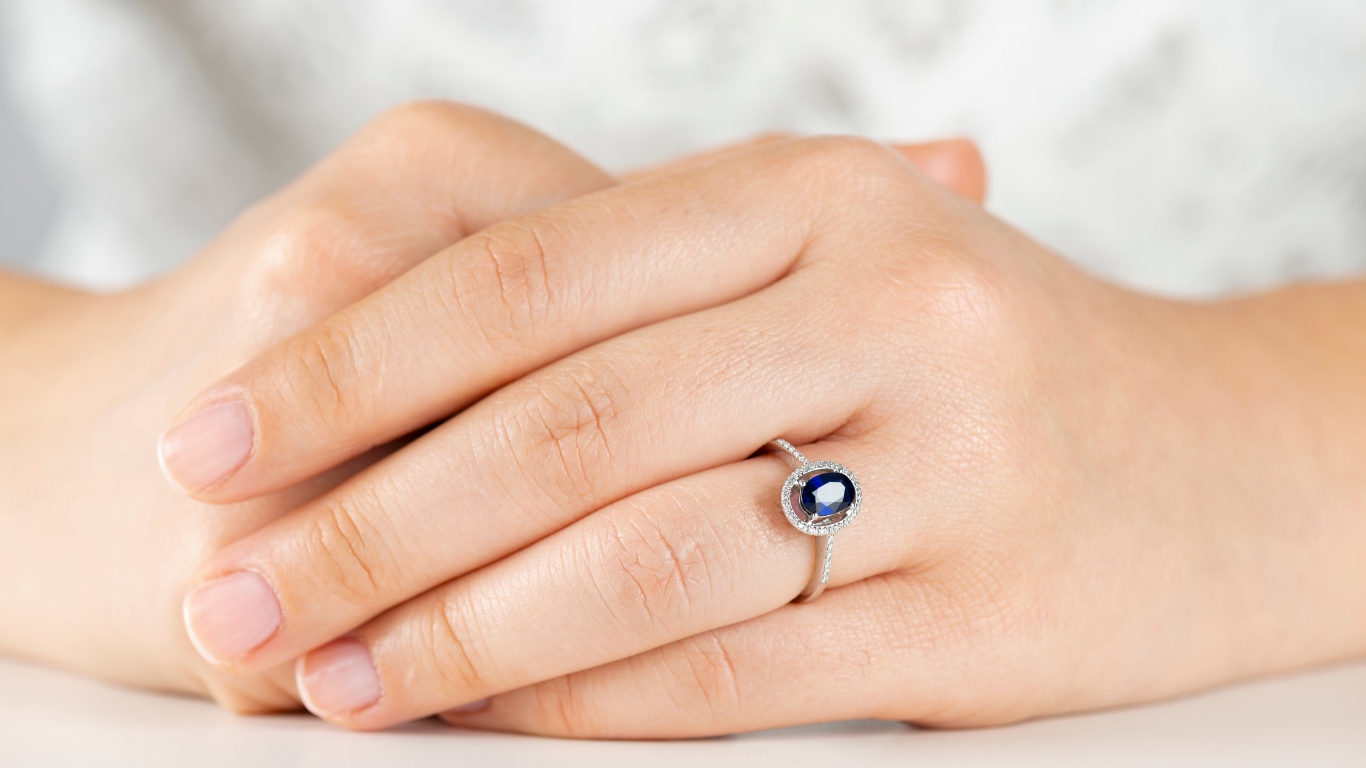Choosing a unique gemstone engagement ring can be an exciting journey. Selecting the right stone involves considering factors like color, durability, and personal style. Each gemstone has its own story, making it important to find one that reflects the couple’s love and individuality.
As the trend of non-traditional engagement rings grows, many are discovering the beauty of sapphires, emeralds, and other gemstones. Understanding the qualities of these stones can help in making a well-informed choice.
Finding the perfect ring is not just about aesthetics. It also involves practical elements like budget and the ethical sourcing of materials. Buyers can enjoy their engagement ring knowing it aligns with their values and personal taste.
Key Takeaways
- Unique gemstones can symbolize personal stories and styles.
- Buyers should consider durability and color when choosing a stone.
- Ethical sourcing is important in the purchasing decision.

Understanding Gemstone Engagement Rings
Gemstone engagement rings provide a unique alternative to traditional diamond rings. Their beauty, meaning, and variety make them an appealing choice for many couples. It is important to consider aspects like allure, durability, and color significance when selecting a gemstone ring.
The Allure and Symbolism
Gemstones often carry rich meanings and symbolism. For example, sapphires represent loyalty and trust, while emeralds symbolize rebirth and love. Each gemstone has its own story, making them special choices for an engagement ring.
The colors and origins of gemstones can also affect their appeal. Unique stones, like opals or tanzanite, offer distinctive beauty. Couples may choose a particularly meaningful gemstone based on personal connections or preferences.
Gemstone Durability and Hardness
When choosing a gemstone for an engagement ring, durability is crucial. The hardness of a gemstone affects how well it can withstand everyday wear.
The Mohs scale measures mineral hardness. Here are some common gemstones and their ratings:
Gemstone | |
Diamond | 10 |
Sapphire | 9 |
Ruby | 9 |
Emerald | 7.5 – 8 |
Amethyst | 7 |
Diamonds are the hardest, making them highly resistant to scratches. Sapphires and rubies are also durable options. Emeralds require more care due to their softer nature.
Color Significance and Selection
Color plays a significant role in choosing a gemstone. Different colors can evoke various feelings and meanings.
Popular colors include:
- Blue: Trust and loyalty (e.g., sapphires)
- Green: Growth and harmony (e.g., emeralds)
- Pink: Love and romance (e.g., pink diamonds)
Couples should consider their personal preferences and how certain colors resonate with them. The right color can enhance the beauty of the ring and reflect the couple’s unique bond. Selecting a gemstone based on its color can lead to a meaningful engagement ring.

Practical Considerations When Choosing
Choosing a gemstone engagement ring involves several practical factors. It’s important to consider both the budget and the maintenance requirements of the chosen stone to make an informed decision.
Budget and Cost Factors
Setting a budget is crucial when selecting a gemstone engagement ring. Gemstones can vary significantly in price, based on factors like rarity, type, and quality. For example, sapphires and rubies can range from a few hundred to several thousand dollars, while more common stones, like amethysts, are generally less expensive.
Here is a simple breakdown of average costs for popular gemstones:
Gemstone | Average Price Range |
Sapphire | $500 – $5,000 |
Ruby | $1,000 – $10,000 |
Emerald | $1,500 – $15,000 |
Amethyst | $100 – $500 |
Considering your financial situation is key. It’s also wise to account for additional costs, such as setting and insurance.
Maintenance and Care Requirements
Different gemstones require different levels of care. Some stones, like diamonds, are very durable and can withstand daily wear. Others, like opals, are softer and may be prone to scratching or damage.
To keep gemstones looking their best, regular cleaning is important. Here are some tips:
- Use warm soapy water and a soft brush for cleaning.
- Avoid harsh chemicals that can damage the stone.
- Store rings separately to avoid scratches.
Understanding care requirements aids in preserving the beauty and longevity of the ring. Proper care ensures that the gemstone remains a stunning symbol of love for years to come.

Design and Style Elements
When choosing a gemstone engagement ring, design and style are key factors. The setting, style, and customization options impact both the ring’s appearance and its effect on the gemstone. Each element plays a significant role in creating a unique piece.
Setting Types and Their Impact
The setting significantly influences how a gemstone appears. Several popular setting types are available:
- Prong: Holds the gemstone with tiny metal claws, allowing maximum light to pass through. This enhances sparkle but may require careful maintenance.
- Bezel: Encircles the stone completely, offering a secure fit. This style is great for active lifestyles but may not reflect as much light.
- Halo: Features a circle of smaller stones around the center gem. This adds brilliance and gives the illusion of a larger center stone.
Each setting type can change the overall look of the ring. Consider how well it complements the chosen gemstone.
Ring Styles and Trends
Various styles and trends are available for gemstone engagement rings. Some popular options include:
- Vintage: These rings often feature intricate details and unique designs. They can be perfect for someone who appreciates history.
- Modern: Sleek lines and minimalist designs define this style. It suits those who prefer a contemporary look.
- Art Deco: Known for geometric shapes and colorful stones, this style appeals to those who love bold designs.
Staying updated on trends can help in choosing a ring that reflects personal style. It’s essential to consider what resonates most with the wearer.
Customization Options
Customization allows for a more personal touch. Options include:
- Gemstone Choice: Selecting the right gemstone is crucial. Popular choices like sapphires and emeralds offer vibrant colors.
- Ring Metal: Choices include gold (yellow, white, or rose), platinum, or silver. Each metal has unique properties and looks.
- Engravings: Personal messages or designs can be added. This detail makes the ring even more special.
Customizing a ring provides an opportunity to create a piece that truly represents the individual’s taste and story.
Making a Responsible Purchase
When buying a gemstone engagement ring, it’s essential to consider ethical sourcing and proper certification. These factors help ensure that the ring is not only beautiful but also responsibly obtained.
Ethical Sourcing and Sustainability
Ethical sourcing means that the gemstones are mined in ways that are fair to workers and do not harm the environment. Buyers should look for retailers that provide information about their gemstones’ origins.
Some key points to consider:
- Conflict-Free Stones: Choose gemstones that are certified as conflict-free, meaning they do not fund violent conflicts.
- Sustainable Practices: Look for jewelers that prioritize sustainable mining practices. This can include using environmentally friendly techniques and ensuring fair wages for workers.
- Recycled Materials: Some jewelers use recycled metals and materials to create their rings. This approach reduces waste and the need for new resources.
Certification and Appraisal
Certification is crucial when purchasing a gemstone. It provides proof of quality and authenticity. Buyers should seek gemstones that come with a certification from reputable gemological laboratories.
Important aspects of certification include:
- Gemstone Reports: These reports detail the gemstone’s cut, clarity, color, and carat weight. They help buyers understand what they are purchasing.
- Independent Appraisal: An independent appraisal can confirm the value of the gemstone. Buyers should consider getting a second opinion if they are uncertain about the price.
- Warranty and Return Policies: Check for warranties and return policies. A good policy can protect against defects or changes in decision after purchase.
By focusing on these aspects, buyers can make informed and responsible choices.
Frequently Asked Questions
Choosing a gemstone engagement ring involves various factors such as the type of gemstone, astrological significance, and the ring’s durability. Here are some common questions about selecting the right option.
What are the considerations for selecting a sapphire engagement ring?
When selecting a sapphire engagement ring, important factors include the color, clarity, and cut of the stone. The most sought-after sapphires are deep blue, but they come in other colors too. Buyers should also consider the durability of sapphires, which are hard and suitable for everyday wear.
Which gemstones are advisable for engagement rings according to astrology?
Astrology suggests several gemstones for engagement rings. For example, those with a Pisces sign may benefit from aquamarine, while Taurus individuals could favor emeralds. Each stone is believed to bring luck and positive energy based on the wearer’s zodiac sign.
How do you distinguish between different types of gemstones for rings?
To distinguish between various gemstones, one can examine factors like color, clarity, and refractive index. Certification from a reliable gemologist can also help confirm the stone’s authenticity. Additionally, knowing the hardness of the gemstone helps assess its suitability for daily wear.
What factors should you consider when purchasing a diamond engagement ring with gemstones?
When buying a diamond engagement ring with added gemstones, buyers should assess the quality of both the diamond and the accompanying stones. The ring’s design and how the gemstones complement the diamond are crucial. It’s also important to consider the durability of the additional gemstones in relation to the diamond.
What are the reasons to choose a moissanite engagement ring over other gemstones?
Moissanite offers notable advantages, such as exceptional brilliance and fire that outshines many traditional gemstones. It is also highly durable, making it suitable for everyday wear. Additionally, moissanite usually comes at a lower price point than diamonds, providing a budget-friendly alternative.
Are there any gemstones that are typically not recommended for engagement rings, and why?
Some gemstones are less ideal for engagement rings due to their softness or fragility. For instance, opals and pearls can be easily scratched or damaged. While they are beautiful, these stones might not withstand daily wear and tear like harder gemstones do.

